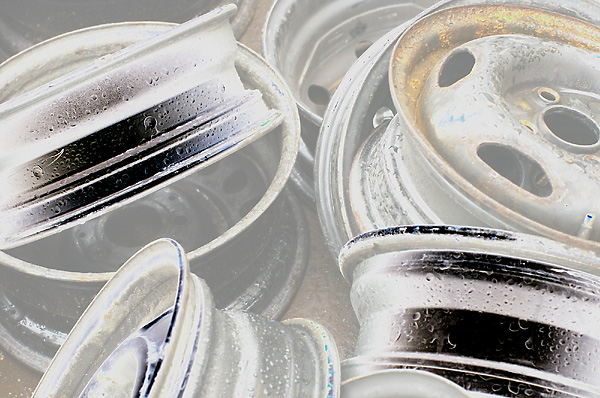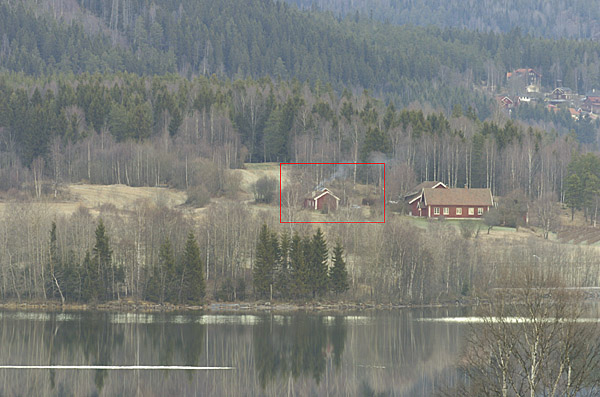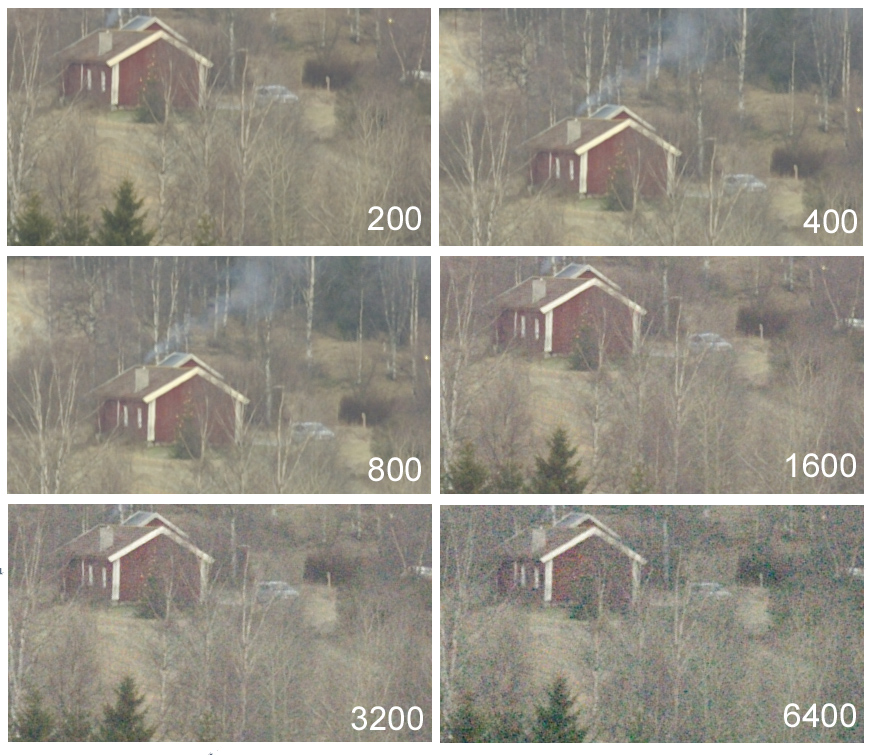 |
|
| Beyond
The Rim, and Still No Noise D2H, 50 mm f/1.2 Nikkor, |
© Bjørn Rørslett/NN |
| Nikon D2H Digital Camera Reviewed | |
| by Bjørn Rørslett | |
4.
Noise Performance
Digital image noise can be obtrusive, but a nearly noiseless digital image in fact can be perceived as cold and sterile. Thus, not all kinds of noise are bad as far as photography is concerned. Just rewind your memory to the old glorious days of souped Tri-X when megagrain (not megapixel) was in the vogue.
I think we quite easily accept some noise in the images when that noise manifests itself sufficiently random, in nature as well as in its spatial distribution. Visual patterns of noise, and in particular banding of the image, are far more objectionable.
Underutilization of the dynamic range of the digital imager is a major putative candidiate for noise generation. This occurs either by user error (underexposure) or by deficiencies in the metering system of the camera emphasizing highlights instead of shadows when scene contrast is high. I believe the matrix metering system of D2H sometimes try to prevent highlights to blow out and thereby allows the shadows to get too dark. The end result is an image with perfect highlights and shadows in which noticeable colour noise can appear. The cure for this is simply to expose a little richer, or thinking about how you did shoot negative instead of slide film in the dark ages so many moons ago. When scene contrast is moderate however, the metering accuracy of D2H is uncannily spot-on all the time.
If you underexpose severely, banding can and will occur even on the D2H. The amount of exposure error likely to cause this problem will fluctuate according to the ambient light levels and you may get off the hook much easier when erring in sunlight than at dusk or dawn. If in doubt, simply bracket your shots on the plus side, and you should be fine. In test shoots, I once run the camera up to an "ISO" equivalency of 100.000 (sic) by combining the HI-2 setting with increasing amounts of intended underexposure. The NEFs then were normalised in Nikon Capture to give the same readings of their histograms. Up to 12.500 "ISO" detail and colour were surprisingly good, and in a pinch you could try such abuse of the camera and still get away with useful imagery. At 25.000 "ISO" banding became obvious and beyond that level, banding and shadow noise made the images nearly useless.
Automatic white-balance is another less readily recognised culprit in causing digital noise. We have become sloppy technicians preferring to click a button in software to get a "white" rendition instead of attaching a colour-balancing filter to the lens. Thus when shooting under incandescent lighting and setting the colour balance by automatic means, we are (but shouldn't be) surprised and annoyed by appearance of blue-channel noise, and don't consider the tremendous additional boost of blue colours needed to balance a blue-deficient light (incandescent light) as white.
A final way of avoiding noise is to max out aperture (and/or shutter speed) before you dial in a higher "ISO" setting on the camera. I find I can acheive virtually noiseless images with the 50 mm f/1.2 Nikkor, my pet lens for D2H, at 200 "ISO" and f/1.2-f/1.4 @ 1/8 sec instead of setting it to f/2.8, use 1/15 sec and increase "ISO" to 800 - 1600.
 |
|
| Beyond
The Rim, and Still No Noise D2H, 50 mm f/1.2 Nikkor, |
© Bjørn Rørslett/NN |
Sometimes however you do need to, or simply want to, set sensitivity to something above the nominal 200 ISO equivalency value. What is the noise penalty incurred by such doubtful practice? The illustrations below can provide the necessary food for thoughts on this issue.
 |
|
| Rural
Homestead D2H, AFS 300/2.8 ED-IF Nikkor The crop area is indicated in red |
© Bjørn Rørslett/NN |
Below are the 100% crops taken with "ISO" settings from 200 to 1600, plus HI-1 (3200) and HI-2 (6400). Lens set at f/5.6, exposure with D2H in "A" mode. No sharpening or other modifications to the raw (NEF) file have been performed either in camera or in Nikon Capture 4. (Yes, I do know the crops are not showing the identical section of the image, but the pixel dimensions are the same and it's now getting very late in the evening so I can't stand the thought of re-assembling the image again).
 |
You are entitled to draw your own conclusions of course, but I for one won't hesitate upping the "ISO" equivalency if needs dictate so. Nikon has designated the two upper levels as "HI" and won't give an "ISO" number for them, and the images do show they are more noisy than the approved range of 200-1600 "ISO". However, image detail is sharply rendered and the noise can be mitigated to some extent by dedicated noise removal software. I've seen several interesting pictorial avenues to be explored by my D2H running in "HI" mode.